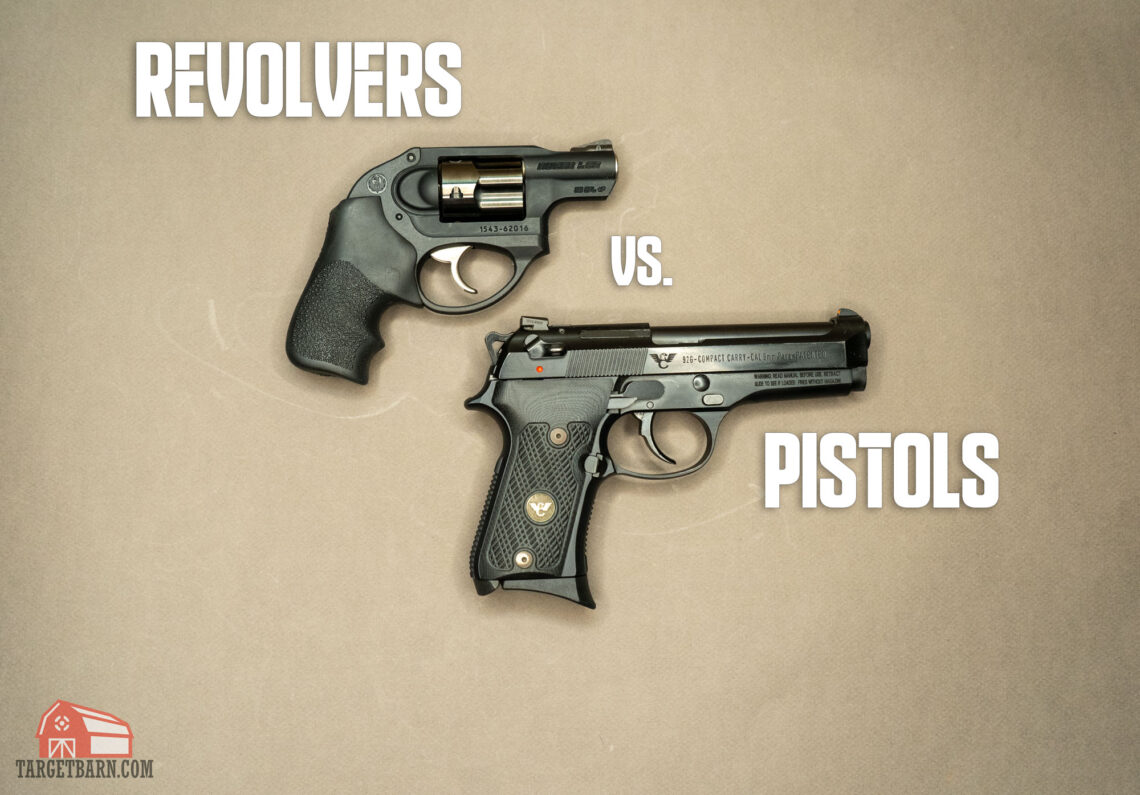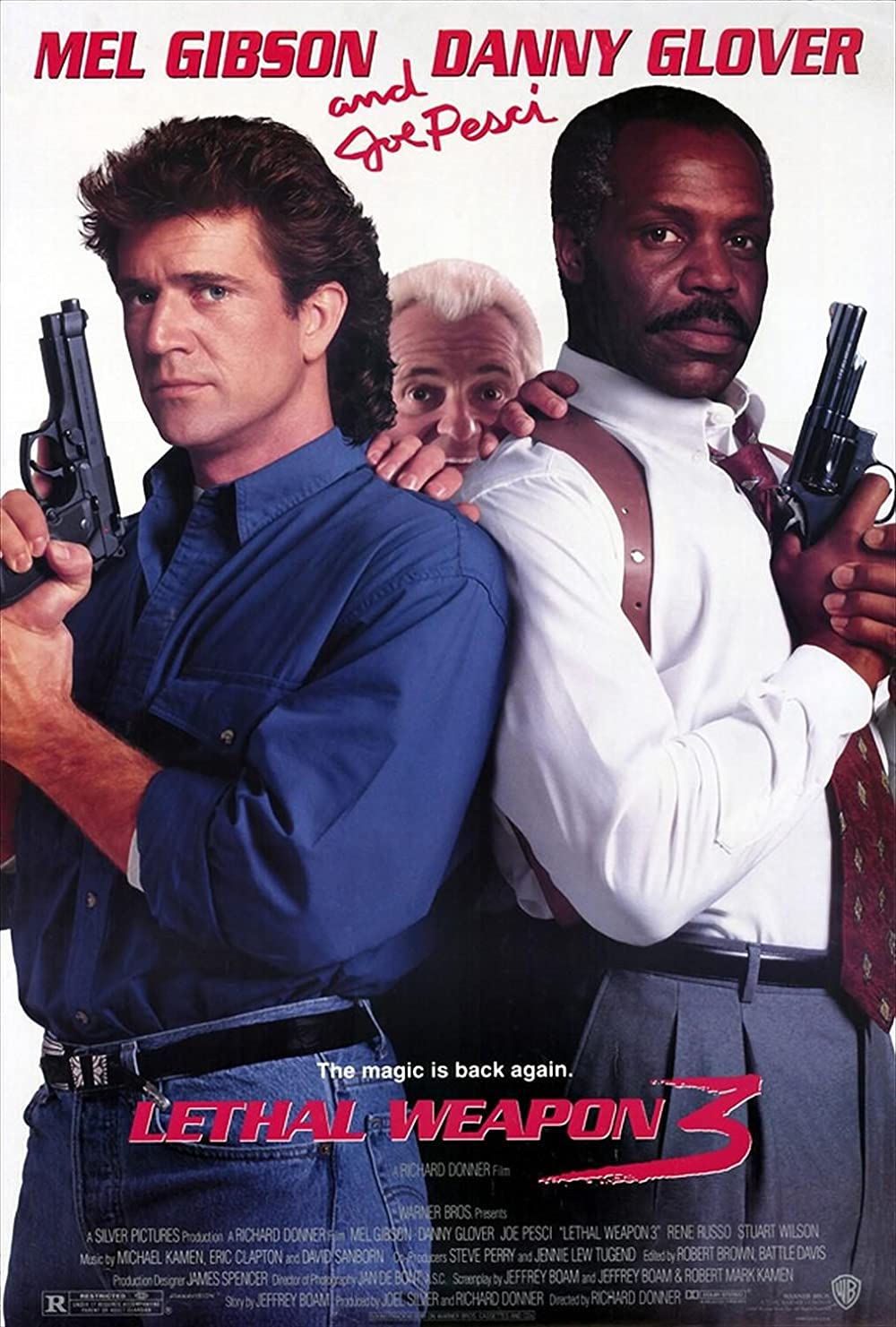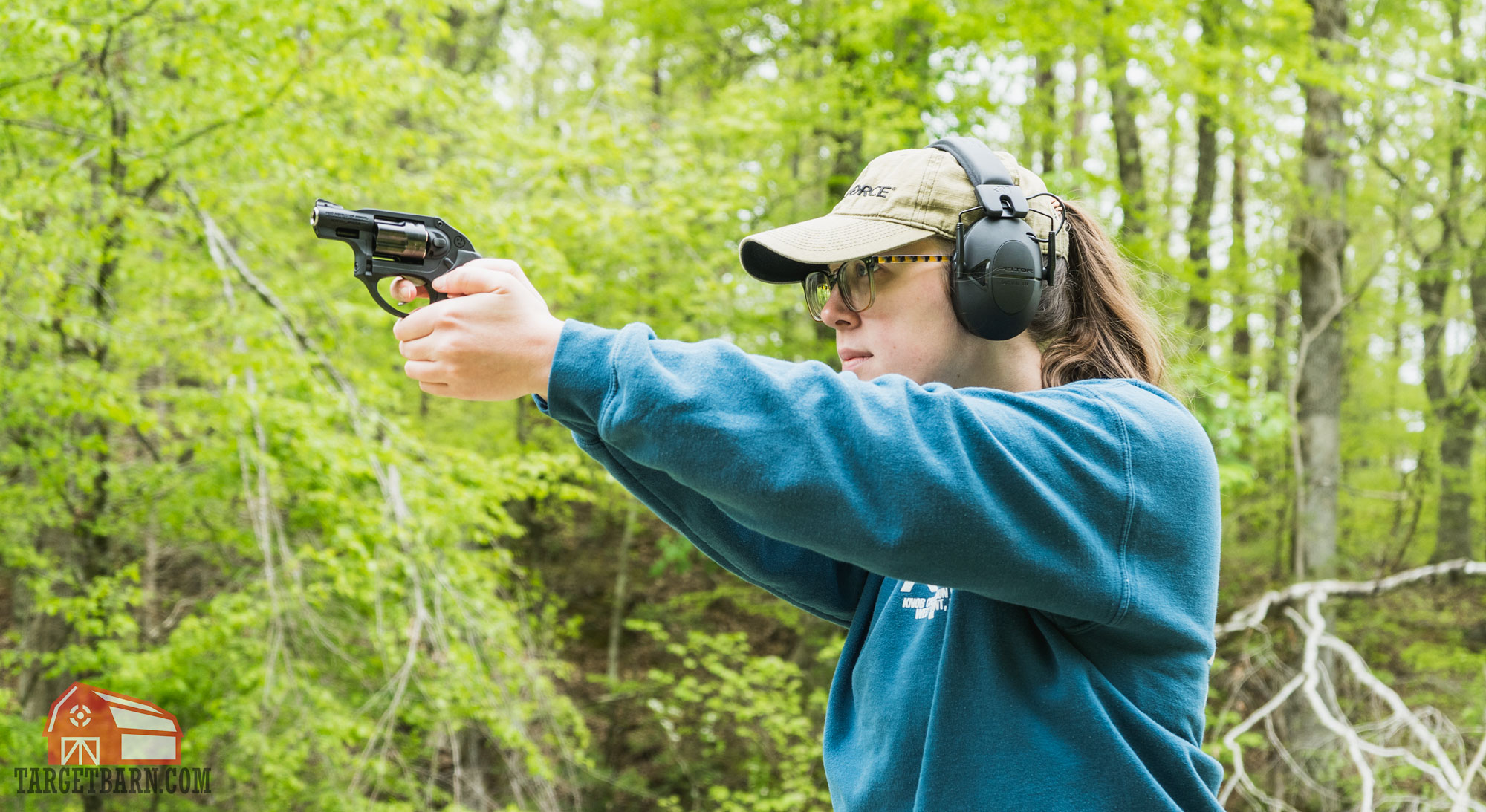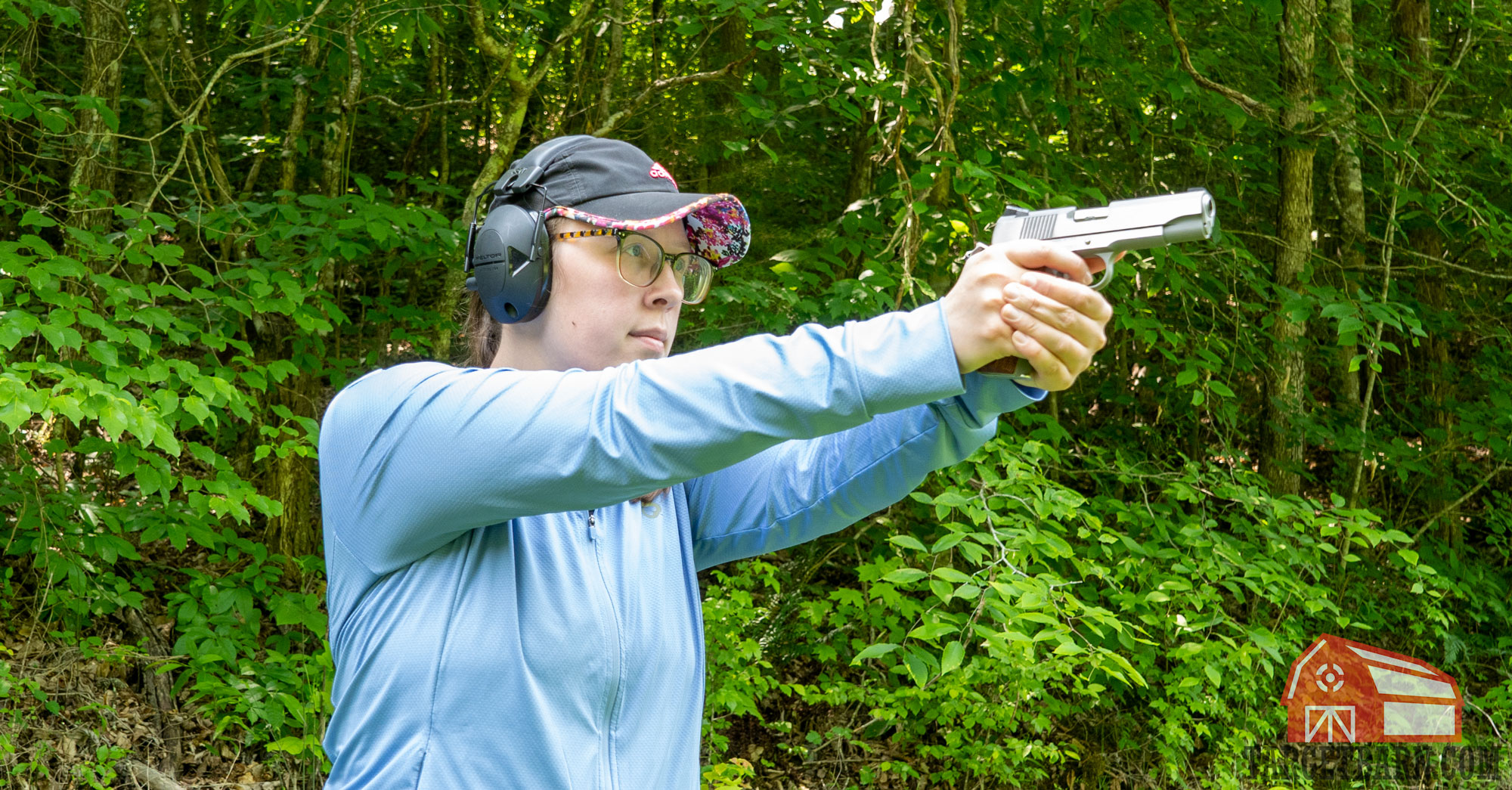Revolver vs. pistol: is one better for self-defense? That’s the first question you have to ask yourself before choosing a handgun for personal protection.
Make no mistake: There’s no shame if you don’t already know any differences between revolvers and pistols. Fortunately, it only takes a few moments to understand the advantages of each.
The quick rundown between revolvers vs. pistols:
- The terms revolver and pistol are generally used interchangeably, but are technically different.
- Revolvers have a cylinder that holds ammo and are generally simpler to shoot.
- Pistols most often use magazines to hold ammo and generally have a larger ammo capacity.
If you want to learn more, here’s what you need to know in order to make an informed choice about the firearm that might one day save your life!
Revolver vs. Pistol: What’s the Difference?
You have no doubt already seen the two major types of handguns countless times in movies and TV shows. The poster for Lethal Weapon 3, shown above, conveniently features both. Det. Martin Riggs (left) holds a Beretta 92 – a semi-automatic pistol. As the elder of the pair, it makes sense that Det. Roger Murtauh (right) would prefer a revolver. Police departments only began replacing their revolvers with semi-autos during the ‘70s, but cops who wanted to keep the revolvers they’d already grown accustomed to were frequently grandfathered in.
You don’t need to be an expert gunsmith to notice the cylinder on Det. Murtauh’s revolver. Located above the trigger and just behind the barrel, it holds the rounds the revolver is about to fire. Det. Riggs’s pistol doesn’t have a cylinder. His pistol stores its cartridges in a detachable magazine, which is inserted into and ejected from the base of the grip. So long as it contains any ammunition, the magazine presents a fresh cartridge for the bolt to automatically insert into the pistol’s chamber.
Are Revolvers the Same Thing as Pistols?
People often use the words “revolver” and “pistol” interchangeably. That’s fine for casual conversation, but the words technically refer to different types of handguns. According to Merriam-Webster, a pistol is “a handgun whose chamber is integral with the barrel.” The chamber is the part of the handgun where the cartridge sits during ignition. Not all handguns with fixed chambers are semi-automatic (i.e. derringers), but all semi-auto handguns are pistols.
In contrast, a revolver’s chambers are not integral to its barrel. Its chambers are in its cylinder, which rotates before each shot is fired to align a fresh cartridge with its barrel. The ATF’s definition of a revolver refers to it as a “projectile weapon of the pistol type,” so it is easy to see why people use the terms interchangeably.
How Do Revolvers Work?
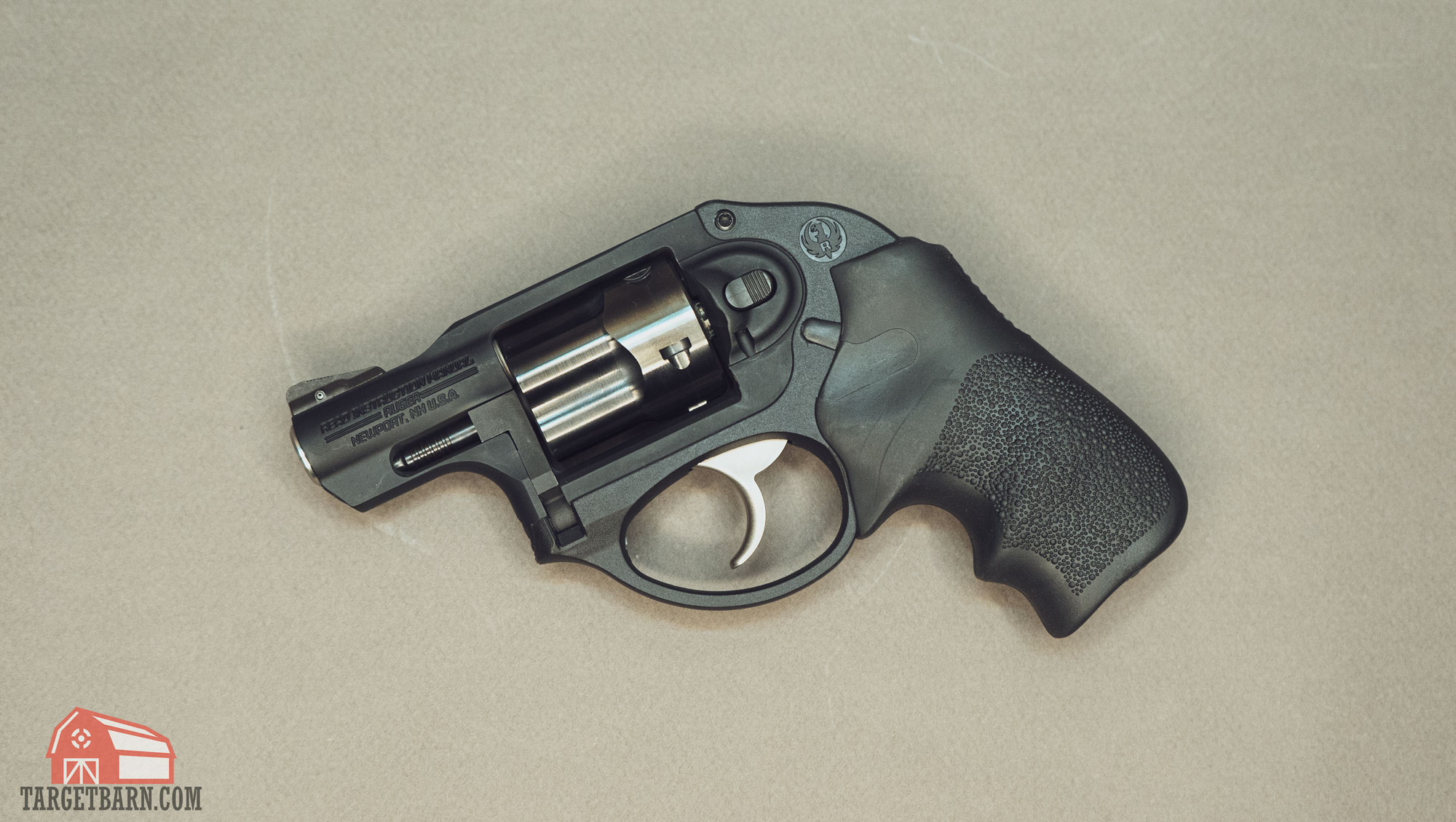
As the older handgun design, a revolver operates on a simpler principle than a pistol. As we just mentioned, a revolver’s cylinder stores ammunition and rotates to align the next cartridge with the barrel. When a revolver is fired, its hammer swings forward to strike the cartridge’s primer and commence ignition.
The main types of revolvers are double action and single action revolvers. There are double action only revolvers as well.
- A single-action (SA) revolver requires the shooter to manually cock the hammer before firing each shot. The shooter then pulls the trigger which drops the hammer, firing a round.
- A double-action/single-action (DA/SA) revolver allows the shooter to fire by only squeezing the trigger. When the shooter pulls the trigger, two things occur: the hammer cocks then releases to fire a round. The shooter can also fire in single-action by first cocking the hammer, then pulling the trigger to fire a round.
- A double-action only revolver is a hammerless revolver that can only rotate its cylinder and cock its internal hammer when its trigger is squeezed.
How Do Pistols Work?

We will only focus on how semi-automatic pistols work, as they’re the most popular for personal protection. Despite having a fixed chamber, a pistol is a much more sophisticated device than a revolver. In addition to propelling the bullet down the barrel, a pistol utilizes the force of ignition to automatically (A) eject the fired round’s empty case, and (B) move the next round from the magazine into its chamber.
A pistol’s semi-auto mechanism typically operates around one of two different actions:
- A blowback-operated action isn’t mechanically locked. Its slide and recoil spring keep it closed. Chamber pressure generated by ignition is sufficient to push the slide backward and cycle a blowback-operated pistol. This action is only compatible with weaker cartridges, such as .22 LR, .32 ACP and .380 ACP.
- A recoil-operated action is mechanically locked. Ignition recoils the slide and barrel backward. Eventually the barrel unlocks, allowing the slide to continue moving backward until the pistol cycles. This action is typically found in handguns chambered for 9mm and more powerful cartridges.
Advantages of Revolvers
Why would a shooter choose a revolver over a semi-auto pistol? As Caleb Giddings explains, there’s a U-shaped utility curve when it comes to revolvers. He explains that revolvers are useful for very beginner shooters with no interest in training, as well as high-level shooters who train regularly. That’s because they’re easy to use, but also useful in times when a shooter needs to conceal a lightweight, small gun.
Power
A revolver’s sturdier design means that it can be chambered for more powerful cartridges, although this isn’t necessarily of enormous benefit for self-defense. The most powerful revolver calibers that are commonly used for self-defense are .357 Magnum and .44 Magnum, but some pistols can also fire those rounds. Pistols aren’t chambered for extremely large and powerful cartridges like .454 Casull and .500 S&W Magnum – but those rounds are so potent that they are generally only practical for hunting and defense against bears.
So, while there are some high-powered revolver rounds, the most popular for self defense are going to be the .38 Special and .357 Magnum
Reliability
A revolver has very few moving parts. Fewer things can go wrong with it for that reason alone, which means a revolver is less likely to fail during a self-defense scenario. Furthermore, if a revolver encounters a dud, the shooter only has to pull the trigger to align the next round with the barrel (assuming it’s a DA).
Note that a revolver’s greater reliability really only comes into play if you intend to leave it in a drawer for extended periods of time. With reasonable maintenance and the right ammo, a decent pistol is not likely to malfunction.
Accessibility
It isn’t hard to learn how to use a pistol. Lots of dumb people manage it just fine. But learning how to operate a revolver is still easier. Once you have grasped how to swing out its cylinder, it’s only a matter of figuring out where the trigger is located. (Actually learning how to fire accurately is a different matter.)
They are also more difficult to negligently discharge, making them a good choice for new shooters who do not train.
Advantages of Semi-Auto Pistols
Next, let’s look at the advantages of semi-auto pistols.
Ammo Capacity
A revolver cylinder typically only holds five or six rounds. Some pistols, such as the Glock 42, only store six rounds of .380 ACP ammo in their magazines, but most hold significantly more. For example, the Glock 17’s standard magazine holds 17 rounds of 9mm ammo. You can even insert a 100-round magazine into a Glock 17 (if you don’t mind the added bulk and heft).
It is never disadvantageous to have more ammo than you need to neutralize a threat. It is never advantageous to bring too little ammo to a life-or-death altercation.
Reloading
It is easy to load a revolver in a hurry so long as you have extra ammo ready on a moon clip or speedloader. That said, reloading a pistol is still quicker and easier: eject empty mag, insert full mag, rack slide, fire. Part of the reason cops made the switch to pistols was so they could match criminals’ increasing firepower. Reloading every time you fire six shots is impractical if you are subduing a crook armed with a TEC-9 and a 72-round magazine.
Revolver vs. Pistol: Which Should You Choose?
We’ve tried to summarize the differences between the revolver vs. pistol as succinctly as possible. Ultimately, the ideal handgun for personal defense is a matter of personal preference. Our best advice is to try both out. See which you’re more comfortable with. Whichever gun you shoot well and will train with is likely the best choice for you!

